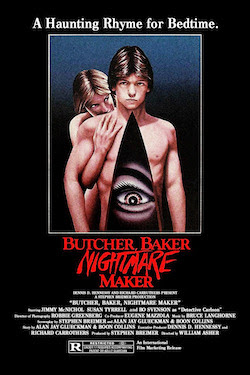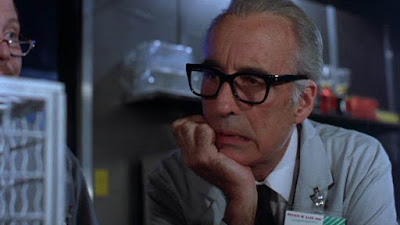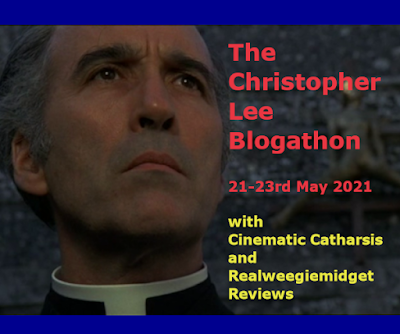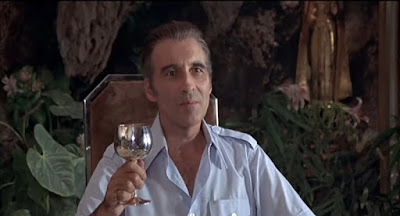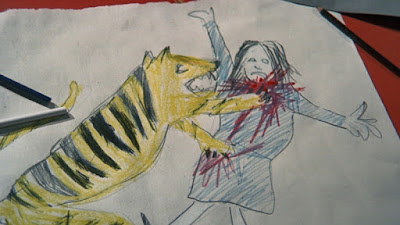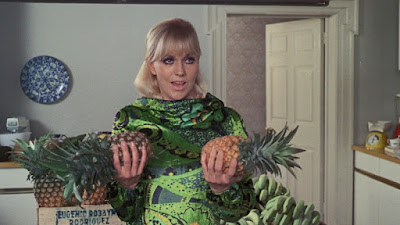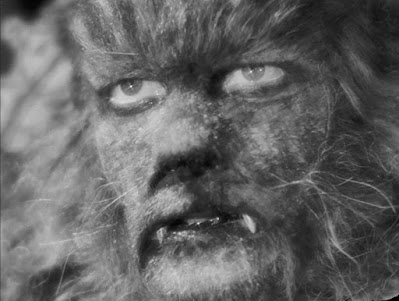(1946) Written and directed by Jean Cocteau; Based on the
story by Madame Leprince de Beaumont; Starring: Jean Marais, Josette Day, Mila
Parély, Nane Germon, Michel Auclair and Marcel André
Available on Blu-ray and DVD
Rating: *****
“To find trees where there are none, or something where it
shouldn’t be, such as a hat off a head in one shot but on again in the next,
are, as it were, cracks in the wall through which poetry can penetrate. Those who
notice such spelling mistakes are the real illiterates and cannot be moved by
fantasy anyhow. Such details have no importance.” – Jean Cocteau (from Diary
of a Film, by Jean Cocteau)

Fairy tales stand apart from more conventional stories
because of their timeless quality, passed down from generation to generation. They
reside on their own plane, a kind of universal language that’s understood and
enjoyed by young and old. When or where they take place isn’t relevant, compared
to the lessons they teach us about human nature. Beauty and the Beast (aka:
La Belle et la Bête) begins, fittingly enough, with “Once upon a time…” In
his introduction, writer/director Jean Cocteau invites us to enjoy his film
with the innocence and wonderment of a child. Beauty and the Beast, which
Cocteau described as “a fairy tale without fairies,” was years in the planning,
and filmed from late 1945 through the first half of 1946. He utilized real-life
locations for the exteriors (which gave the film a more expansive feel), while
the interiors were filmed in sound stages around Paris. An 18th
century manor house in Rochecorbon* served as the home for Belle and her family,
and the exterior of a sprawling estate in Raray became the Beast’s castle. The
production suffered numerous setbacks, including the illnesses of Jean Cocteau**
and cast members Jean Marais and Mila Parély, multiple power outages, and budgetary
constraints that necessitated the use of several different film stocks. It’s a
testament to Cocteau’s vision, chronicled extensively in his Diary of a Film,
that he never lost his way.
* Fun Fact #1: For his location shoot in Rochecorbon,
Cocteau was plagued with constant flyovers from a local military airfield – the
anachronistic drone of the aircraft (and their presence in the sky) would have undoubtedly
taken viewers out of the fairy tale world.
** Not-So-Fun-Fact: Cocteau suffered from numerous ailments
throughout the course of filming, including facial rashes, boils, a tooth abscess,
and painful sensitivity to the studio lighting. At one point, some of his symptoms
became so severe that he was hospitalized for a few days, followed by several
days of recovery, bringing production to a temporary halt.

Belle (Josette Day)* spends her days caring for her merchant
father (Marcel André), and being subservient to her two cruel, narcissistic
sisters Félicie and Adélaïde (played by Mila Parély and Nane Germon,
respectively). While she toils away with the housework, they dress in the
finest clothing, acting like royalty, even though the family fortune has been
squandered. Her brother Ludovic (Michel Auclair) mocks her sisters for their
haughty ways, while he wastes his hours with his friend (and Belle’s potential suitor)
Avenant (Jean Marais).** One fateful evening, Belle’s father, too destitute to pay
for a room at an inn, is forced to ride through the forest alone at night. He encounters
an enchanted castle, where he spends the evening. During a walk in the garden,
he picks a single rose for Belle, which incites the sole denizen of the estate,
a fearsome Beast. The enraged creature spares his life, in exchange for one of
his daughters. Despite her father’s protests, Belle selflessly volunteers to go
in his place. Anyone familiar with Madame Leprince de Beaumont’s enduring story,
or its many incarnations and permutations, will know the rest.
* Fun Fact #2: According to film historian Arthur Knight, Josette
Day was so frightened of the Beast’s horse “Magnificent,” featured prominently
in the film, that Cocteau used a double for her riding scenes.
** Fun Fact #3: In de Beaumont’s original story, Belle had three
brothers, which was changed simply to Ludovic for the movie. Avenant served as
Belle’s sole suitor, in place of multiple (unsuccessful) suitors in the story.
Cocteau found a fitting Beast/Avenant/Prince in his lover/muse
of several years, Jean Marais. The triple role was especially demanding as the
Beast, which required enduring the extensive makeup by Hagop Arakelian.* Despite
the limitations imposed by the makeup (which restricted what he could eat, and
often placed him into a foul temper), Marais’ passionate performance shines through.
With his face obscured, he conveys pathos with his eyes and emotes through body
movement.
* Fun Fact #4: Marais’ Beast makeup required five hours to
apply, and his scenes sometimes demanded that he stay in makeup for up to 15
hours at a stretch (a feat that would likely have tested anyone’s patience).

The film’s design required ingenuity from Cocteau’s
dedicated team of craftspeople, accomplishing so much with so little. In his
film diary, Cocteau lamented that there wasn’t a budget to shoot the film in
color. Black and white, however has its own magic. Per his instructions, the
castle interiors were based on the works of French illustrator Gustave Doré.
The imagery, particularly in the Beast’s castle, resembles pencil sketches or
charcoal drawings, effectively mimicking what you’d expect to find in an old
storybook. The monochromatic images contribute to the ethereal nature of the
subject matter, with the results resembling a waking dream. In one scene, Belle
traverses one hallway in slow motion, as if in a somnambulistic trance. In another
part of the castle, she glides through a corridor as though she were floating
on air. The sets incorporate surreal touches, including candelabras held up by
disembodied arms jutting from the walls, food and drink that serves itself, and
ghostly caryatids, whose eyes follow Belle’s every movement. Cocteau also
employed old-fashioned trick photography (dating back to the films of Georges
Méliès) to depict the impossible, as when Belle’s tears become diamonds. With
its emphasis on visuals and pantomime, Beauty and the Beast could just as well be
a silent film. In many cases, the dialogue (which Cocteau confided was something
he didn’t enjoy writing) is almost incidental.

Contrary to what we’re led to believe, it’s not the beast
who’s ugly. Rather, it’s others’ distorted perceptions of him, fueled by avarice,
envy and ignorance. It takes Belle’s patience and compassion to see the beauty
inside (although truth be told, I never thought he looked ugly in the first
place. His supposedly dreadful appearance is something we have to accept on
faith alone). Similar to the roses the Beast cherishes, the film is a respite
from the awful realities of the world. It’s an exquisite work, told with
finesse, humor, and above all, the heart of a child. Cocteau understands the
conceits of the fairy tale, working within its confines, which requires the
complicity of the audience. The more one tries to peek behind the curtains to
explain away the machinations of the film or reveal the magic, the further they
stray from the mark. Beauty and the Beast is a simple story, wonderfully
told, by a master at the top of his craft. It’s a fitting film, if ever there
was, to combat the cynicism of an adult in these complex times.
Sources for this article: Diary of a Film by Jean
Cocteau; Criterion DVD commentary by Arthur Knight


